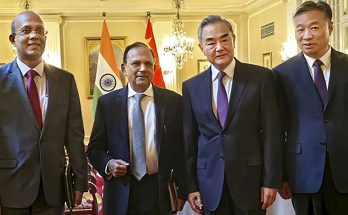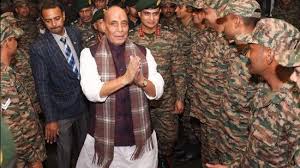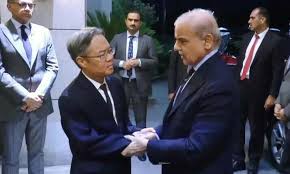With geopolitical tensions escalating in its neighbourhood, China has created three new military bodies as part of reforms to modernise its military and improve its fighting capacity.
On January 2, China’s state television showed President Xi Jinping giving military flags to the leaders of the three new units. The three new units include a general command for the People’s Liberation Army, a missile force and a strategic support force. Mr. Xi said the three new units had been created as part of a modernisation reform and “to realise the Chinese dream of a strong military”. The total strength of China’s military is currently 2.3 million, but there are plans to cut it by 300,000.
Mr Xi has given thrust to the idea of his “Chinese dream” involving “the great renewal of the Chinese nation” and sees a strong military as the key to implementing this idea. The other plans include phasing out old equipment, developing new weapons systems and reducing troop numbers.
Aimed at enhancing the Communist Party of China’s (CPC) leadership over the military, and strengthening the PLA’s combat capabilities by establishing a modern military system, this move is seen as a part of China’s key military reforms.
The establishment of the PLA Rocket Force is an upgrade of the previous Second Artillery Force, which operates strategic as well as conventional missile weapons, according to defence analysts. The upgrade puts the rocket force on an equal footing with the army, navy and air force, Song Zhongping, a military expert said.
The Defense Ministry on January 1 stated that the establishment of the Rocket Force does not mean a major change of its nuclear policy. However, reiterating its no-first-use nuclear weapons policy and defensive nuclear strategy, spokesperson Yang Yujun underlined that “China’s nuclear policy remains consistent, and China always keeps its nuclear capability at the minimum level required for safeguarding its national security.” “We will strive to build a strong and modern Rocket Force,” he added.
By establishing the Army General Command, it puts the control directly under the Central Military Commission (CMC). It is a major step to improve the leadership and command system, the Ministry of National Defence had said earlier. With a massive overhaul in China’s military through restructuring and regrouping, the military reforms are expected to make a major breakthrough and achieve concrete results by 2020, according to the CMC.
Geopolitical Issues
With China rattling its neighbours with its actions, the latest development is likely to worsen the atmosphere as the other countries would be alarmed by China’s increasing military might. From its disputes in the South China Sea to a boundary dispute with India, China’s latest moves could make the other countries in Asia-Pacific insecure about its intentions.
Author Profile
- India Writes Network (www.indiawrites.org) is an emerging think tank and a media-publishing company focused on international affairs & the India Story. Centre for Global India Insights is the research arm of India Writes Network. To subscribe to India and the World, write to editor@indiawrites.org. A venture of TGII Media Private Limited, a leading media, publishing and consultancy company, IWN has carved a niche for balanced and exhaustive reporting and analysis of international affairs. Eminent personalities, politicians, diplomats, authors, strategy gurus and news-makers have contributed to India Writes Network, as also “India and the World,” a magazine focused on global affairs.
Latest entries
 India and the WorldJune 26, 2025Operation Sindoor: India Sheds Restraint, Rediscovers Utility of Force
India and the WorldJune 26, 2025Operation Sindoor: India Sheds Restraint, Rediscovers Utility of Force India and the WorldJune 23, 2025BRICS summit in Rio to focus on Global South, local currency trade
India and the WorldJune 23, 2025BRICS summit in Rio to focus on Global South, local currency trade Africa InsightsJune 11, 2025New Opportunities in India-Japan Cooperation in Africa
Africa InsightsJune 11, 2025New Opportunities in India-Japan Cooperation in Africa India and the WorldMay 23, 2025Post-Operation Sindoor, India reminds Turkey, China of concerns and sensitivities
India and the WorldMay 23, 2025Post-Operation Sindoor, India reminds Turkey, China of concerns and sensitivities








